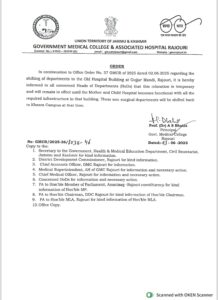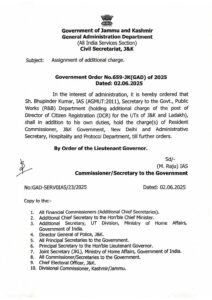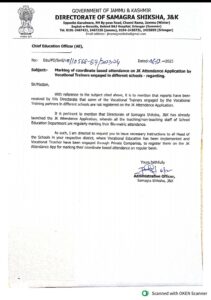Equipment Produced Under ‘Make In India’ Initiative
Many significant projects including 155mm Artillery Gun system ‘Dhanush’, Light Combat Aircraft ‘Tejas’, ‘Akash’ Surface to Air Missile system, INS Kalvari, INS Khanderi, INS Chennai, Anti-Submarine Warfare Corvette (ASWC), Arjun Armoured Repair and Recovery Vehicle, Bridge Laying Tank, Landing Craft Utility, Bi-Modular Charge System (BMCS) for 155mm Ammunition, Medium Bullet Proof Vehicle (MBPV), Lakshya Parachute for Pilotless Target Aircraft, Thermal Imaging Sight Mark-II for T-72 tank, Offshore Surveillance Ship, Water Jet Fast Attack Craft, Inshore Patrol Vessel, Offshore Patrol Vessel, Fast Interceptor Boat, 25 T Tugs, etc. have been produced in the country under ‘Make in India’ initiative of the Government in last few years.
The Government has taken several policy initiatives and brought reforms to promote self-reliance in defence manufacturing. These policy initiatives are aimed at encouraging indigenous design, development and manufacture of defence equipment in the country, thereby reducing dependency on imports in long run. Important policy initiatives and reforms are as under:
- DPP-2016 has been revised as Defence Acquisition Procedure (DAP)- 2020, which is driven by the tenets of Defence Reforms announced as part of ‘Aatmanirbhar Bharat Abhiyan’.
- In order to promote indigenous design and development of defence equipment ‘Buy {Indian-IDDM (Indigenously Designed, Developed and Manufactured)}’ category has been accorded top most priority for procurement of capital equipment.
- Ministry of Defence has notified two ‘Positive indigenisation lists’ of total 209 items for which there would be an embargo on the import beyond the timeline indicated against them. This is a big step towards self-reliance in defence. This would offer a great opportunity to the Indian defence industry to manufacture these items using their own design and development capabilities to meet the requirements of the Armed Forces.
- The ‘Make’ Procedure of capital procurement has been simplified. There is a provision for funding upto 70% of development cost by the Government to Indian industry under Make-I category. In addition, there are specific reservations for MSMEs under the ‘Make’ procedure.
- Procedure for ‘Make-II’ category (Industry funded), introduced in DPP-2016 to encourage indigenous development and manufacture of defence equipment has number of industry friendly provisions such as relaxation of eligibility criterion, minimal documentation, provision for considering proposals suggested by industry/individual etc. So far, 60 projects relating to Army, Navy & Air Force, have been accorded ‘Approval in Principle’.
- The Government of India has enhanced FDI in Defence Sector up to 74% through the Automatic Route for companies seeking new defence industrial license and up to 100% by Government Route wherever it is likely to result in access to modern technology.
- An innovation ecosystem for Defence titled Innovations for Defence Excellence (iDEX) has been launched in April 2018. iDEX is aimed at creation of an ecosystem to foster innovation and technology development in Defence and Aerospace by engaging Industries including MSMEs, Start-ups, Individual Innovators, R&D institutes and Academia and provide them grants/funding and other support to carry out R&D which has potential for future adoption for Indian defence and aerospace needs.
- An indigenization portal namely SRIJAN has been launched in August 2020 for DPSUs/Services with an industry interface to provide development support to MSMEs/Startups/Industry for import substitution. So far, 16445 Defence items, which were earlier imported, have been displayed on the portal. The Indian industry have shown their interest in 3559 items. Out of them, 342 have already been indigenized.
- “Offset portal” has been launched in May 2019 to ensure greater transparency, efficiency and accountability in the process. Reforms in Offset policy have been included in DAP 2020, with thrust on attracting investment and Transfer of Technology for Defence manufacturing, by assigning higher multipliers to them.
- Government has notified the ‘Strategic Partnership (SP)’ Model in May 2017, which envisages establishment of long-term strategic partnerships with Indian entities through a transparent and competitive process, wherein they would tie up with global Original Equipment Manufacturers (OEMs) to seek technology transfers to set up domestic manufacturing infrastructure and supply chains.
- Government has notified a ‘Policy for indigenisation of components and spares used in Defence Platforms’ in March 2019 with the objective to create an industry ecosystem which is able to indigenize the imported components (including alloys & special materials) and sub-assemblies for defence equipment and platform manufactured in India.
- Government has established two Defence Industrial Corridors, one each in Uttar Pradesh and Tamil Nadu to attract total investments of Rs 20,000 Cr in the two Defence corridors by year 2024. So far, investment worth Rs 3600 Cr have been made in both the corridors by public as well private sector companies. Moreover, the respective State Governments have also published their Aerospace & Defence Policies to attract private players as well as foreign companies including Original Equipment Manufacturers (OEMs) in these two corridors.
- An Inter-Governmental Agreement (IGA) on “Mutual Cooperation in Joint Manufacturing of Spares, Components, Aggregates and other material related to Russian/Soviet Origin Arms and Defence Equipment” was signed in September 2019. The objective of the IGA is to enhance the After Sales Support and operational availability of Russian origin equipment currently in service in Indian Armed Forces by organizing production of spares and components in the territory of India by Indian Industry by way of creation of Joint Ventures/Partnership with Russian Original Equipment Manufacturers (OEMs) under the framework of the “Make in India” initiative.
- Defence Products list requiring Industrial Licences has been rationalised and manufacture of most of parts or components does not require Industrial License. The initial validity of the Industrial Licence granted under the IDR Act has been increased from 03 years to 15 years with a provision to further extend it by 03 years on a case-to-case basis.
- Defence Investor Cell (DIC) has been created in Feb-2018 in the Ministry to provide all necessary information including addressing queries related to investment opportunities, procedures and regulatory requirements for investment in the sector. As on 31st Oct 2021, 1257 queries had been received and addressed by DIC.
This information was given by Raksha Rajya Mantri Shri Ajay Bhatt in a written reply to Shri Sisir Kumar Adhikari in Lok Sabha today.





